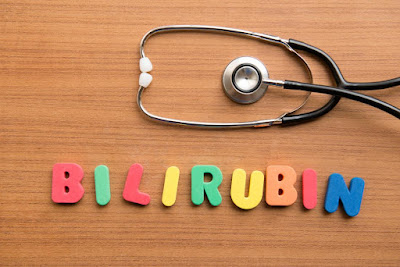Bilirubin,
a product of hemoglobin metabolism, is conjugated in the liver to the mono-
and diglucuronides and excreted in bile. Some conjugated bilirubin is bound
to serum albumin, so-called D (delta) bilirubin. Elevated serum bilirubin
occurs in liver disease, biliary obstruction, or hemolysis.
Normal Range: 0.1-1.2 Direct (conjugated to glucuronide) bilirubin, 0.1-0.4 mg/dL (< 7 µmol/L); Indirect (unconjugated) bilirubin, 0.2-0.7 mg/dL (< 12 µmol/L) mg/dL
increased
in: Acute or chronic hepatitis, cirrhosis, biliary tract obstruction, toxic
hepatitis, congenital liver enzyme abnormalities (Dubin-Johnson, Rotor's,
Gilbert's, Crigler-Najjar syndromes), fasting, hemolytic disorders. Hepatotoxic
drugs.
Additional: Assay
of total bilirubin includes conjugated (direct) and unconjugated (indirect)
bilirubin plus delta bilirubin (conjugated bilirubin bound to albumin).
It is usually clinically unnecessary to fractionate total bilirubin. The
fractionation is unreliable by the diazo reaction and may underestimate
unconjugated bilirubin. Only conjugated bilirubin appears in the urine
and it is indicative of liver disease; hemolysis is associated with increased
unconjugated bilirubin. Persistence of delta bilirubin in serum in resolving
liver disease means that total bilirubin does not effectively indicate
time course of resolution



0 comments:
Post a Comment